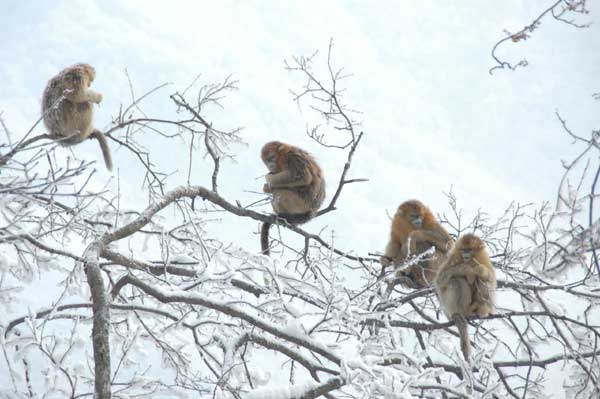事業報告事業番号:19-001-2 中国におけるキンシコウ単位集団内のメスの社会関係に関する研究 報告者:張 鵬 期間:2007/12/22 - 2008/01/20 Several authors suggested that Sichuan snub-nosed monkeys
(Rhinopithecus. roxellana) might form matrilineal groups (Chen et al., 1989; Ren et al., 2000). Nevertheless, this assumption has not been confirmed in their natural habitats. Our previous studies suggested that this monkey lives in the multi-level societies (Zhang et al., 2003, 2006). One-male-unit (OMU) is a basic social unit and many OMUs composed of a big social band. Affinitive interactions, such as allo-grooming, allo-mothering and huddling, are frequently observed among harem females in captive groups (Chen et al., 1989). However, precise information on social organization is not yet available (Ren et al., 2000). This monkey has not been accustomed to human observers and therefore has to be studied from a distance of 50 to 200m using high magnification spotting scopes (Chen et al., 1989; Ren et al., 2000; Li et al., 2000). Individual identification, therefore, was very difficult in field studies. Some authors even questioned existence of OMU and multi-level social organizations in this species (Hu et al., 1980; Liu, 1989; Fukuda et al., 2002). 中国陝西省周至保護区において、キンシコウの野外調査を行った。調査目的は、キンシコウ集団の社会構造を明らかにするために、オトナメスの単位集団間の移動を明らかにすることである。また夜間における単位集団のまとまりに関する予備的な調査を行った。中国の西北大学との共同研究であり。個体識別に基づいた研究を8年間継続してきている。今後の調査計画や、調査実施体制についての、研究連絡を行った。
HOPE Project< |

